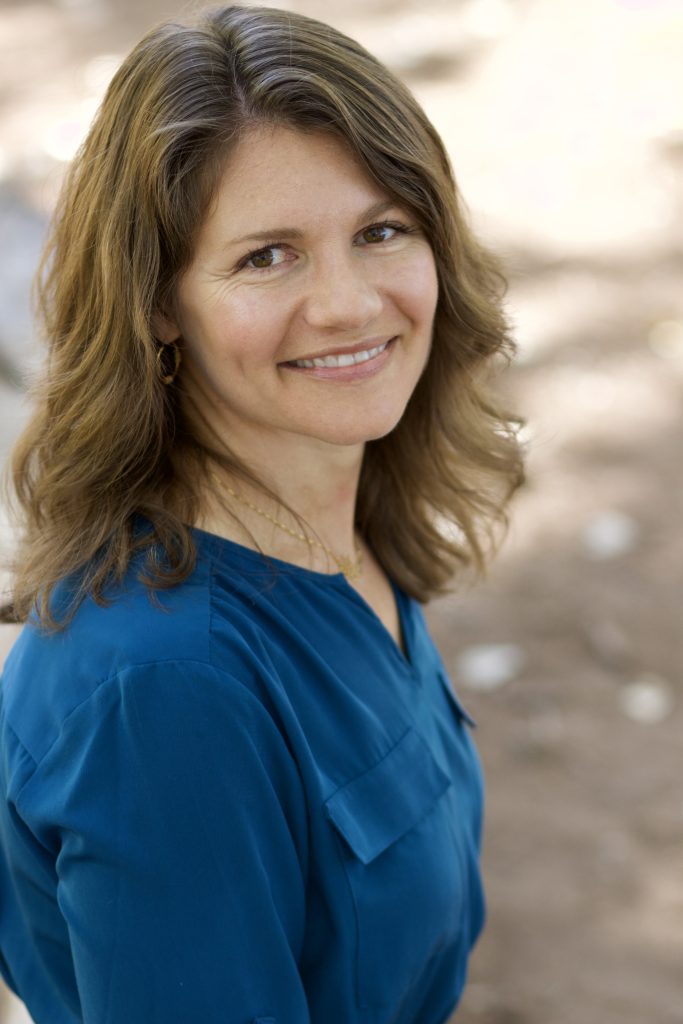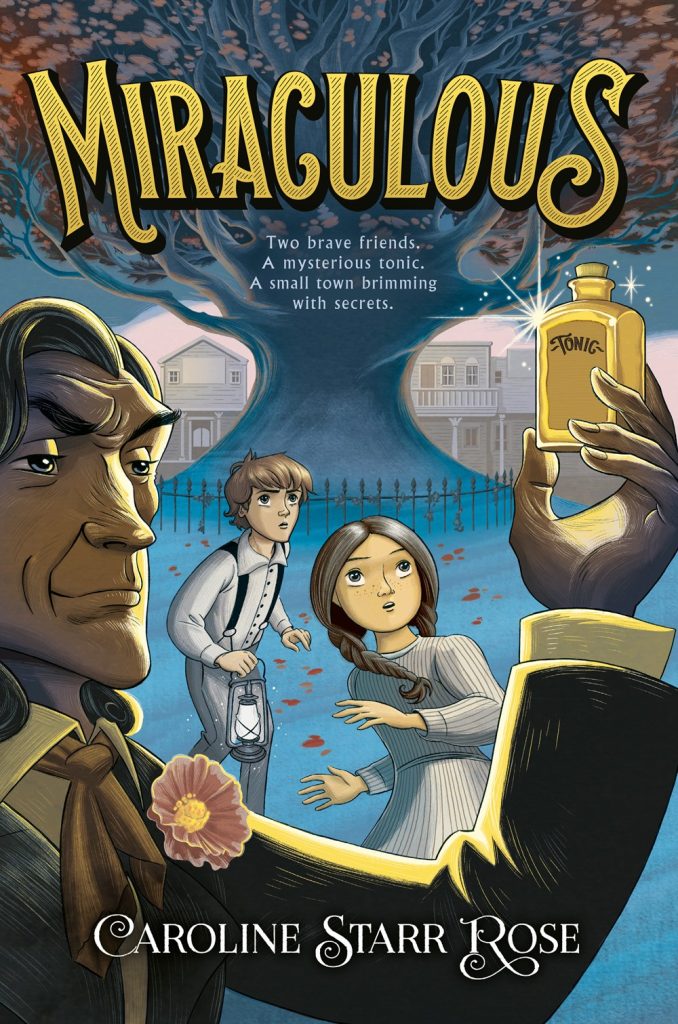From Teaching to Writing

TeachingBooks asks each author or illustrator to reflect on their journey from teaching to writing. Enjoy the following from Caroline Starr Rose.
I’ve learned a lot about writing over the years. Trial and error have been my teachers, as has my editors’ patient guidance. But mostly I’ve learned from showing up, day in and day out, to my work. As a former teacher, I’ve realized not everything I focused on benefitted my students. If I could go back to my teaching days, I’d emphasize these seven things to help my students flourish as writers:
Everyone is creative.
While writing might not be every child’s strong suit, every person has a creative side. (For grownups, it might take a bit of digging to find, but I promise, it’s there.) When it comes to writing, it’s easy to focus on mechanics or fluency as ultimate measurements of ability or skill, leaving some kids at a disadvantage before they’ve even begun. We need to help children understand they already have what it takes to write because they were born creative. We all start from this promising place!
For me, part of the drafting process is discovering what I don’t want to say.
Creativity is not a linear process.
The writing life means knowing that not everything we create follows a predictable path. Maybe an idea sputters out early. Maybe we change directions halfway through a draft. Or maybe we discover something we’ve created isn’t meant for publication (or a grade!), but for our own pleasure alone. For me, part of the drafting process is discovering what I don’t want to say. It includes wrong turns and mistakes and the courage to try outrageous things. Often I can only move forward by circling back to a story’s beginnings. This is not what I learned about the writing process in my education classes. That process had clear demarcations separating each phase. But I’ve found the creative process is much trickier to pin down. I encourage you to let your students experiment, to be less concerned with following a step-by-step plan and more open to possibility.
Choice and freedom are key to discovery.
There will be times young writers will need to tackle assignments like research papers or responsive essays. Even so, I believe it’s even more important that kids are given the freedom to choose their own topics as often as possible. They should be given the freedom to write without some higher purpose (including concerns about grammar and spelling) and have opportunities to create for their own pleasure and benefit alone. When I was teaching, I remember the emphasis placed on “voice”—the more distinct, my colleagues said, the better the student’s writing. But how does a child discover voice? I’d argue it comes through opportunities to experiment and explore.
Listen to the world.
Creative people listen to and observe the world around them. In listening, we catch details we might otherwise miss — bits and pieces that enrich our thoughts and lives. If we invite children to look and listen, they will come to their writing with artistic pumps already primed. One simple way to do this is to regularly model the things that make us stop and wonder. Another is to ask kids to keep notebooks where they paste, color, and collect ideas or questions that might lead to future writing projects. This is a ready-made notebook your writers might enjoy: https://www.amazon.com/Writers-Notebook-Unlocking-Writer-Within/dp/0380784300/
I’ve transformed my own approach to writing in the last years by dropping the “w-word” from my vocabulary.
Tinker, explore, create, play!
Here’s a little secret. Writing isn’t always my thing. That’s a strange confession coming from an author, but an important one, I think. If writing is sometimes “unfun” for a person who does it for a living, how much more challenging is it for the kid who doesn’t enjoy it in the first place? I’ve transformed my own approach to writing in the last years by dropping the “w-word” from my vocabulary. Instead of writing, I now practice, explore, or play. It’s impossible to have a “bad” writing day when I’m simply practicing, just as there’s no right or wrong way to explore. Any time I show up to my work with this mindset, there is something to be gained. When young writers can be taught to approach their writing playfully, the heavy burden of getting it “right” falls away.
Frustration is central to creativity.
There comes a point when I’m writing a book that I’m sure I’ve broken the story. Everything feels hopeless, the words beyond repair. Sometimes this happens only once, sometimes multiple times! But feeling frustration is natural. If kids know this ahead of time, the experience can be less intimidating. Those moments of struggle might be shorter lived. Instead of fearing them, writing challenges can be seen for what they are: opportunities to go deeper and wider, obstacles that, if faced, will eventually lead to breakthroughs, growth, and change.
Revision is where the real writing happens.
Revision means exactly as it sounds—a chance to see a piece of writing again, this time in a new light. As a young teacher, I didn’t understand how crucial revision was. Cosmetic changes —those small-scale edits that are easy to spot and correct—somehow felt more urgent. I wish I’d known then to ask my students the questions I now ask myself after I finish a draft: What is it you’re trying to say? What was your original idea? How has it changed, for better or worse? What changes need to be made to bring this piece of writing in line with your re-vision? This might feel like the unglamorous part of writing, but I promise you it’s the most crucial. In revision, a piece of writing really starts to take shape: The words begin to sing; the story truly forms. Encourage your students to keep on digging. It’s in seeing their writing through revision their best work will be unearthed.
Teaching writing takes courage. Approaching instruction in such an open-ended way is challenging. But when we have the courage to give children room to discover their creativity, the rewards are immeasurable.
Books and Resources

TeachingBooks personalizes connections to books and authors. Enjoy the following on Caroline Starr Rose and the books she’s created.
Listen to Caroline Starr Rose talking with TeachingBooks about the backstory for writing Miraculous. You can click the player below or experience the recording on TeachingBooks, where you can read along as you listen, and also translate the text to another language.
- Listen to Caroline Starr Rose talk about her name
- Explore this Discussion Guide for Miraculous
- Discover Caroline Starr Rose’s page and books on TeachingBooks
- Visit Caroline Starr Rose on her website, Twitter, Instagram, YouTube, and GoodReads.
Explore all of the For Teachers, By Teachers blog posts.
Special thanks to Caroline Starr Rose, Penguin Random House and Blue Slip Media for their support of this post. All text and images are courtesy of Caroline Starr Rose and Penguin Random House, and may not be used without expressed written consent.



Leave a Reply